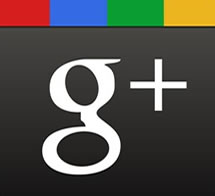
College students won’t have to worry about their professors spotting drunken party pictures on Google Plus, the search giant’s latest attempt at social networking. Getting those students and faculty to sign up for a Google Plus account, however, might be difficult, campus technology leaders say.
The company’s failed attempts to create a social media site that can compete with Facebook—known as Google Buzz and Google Wave—could dampen excitement about Google Plus, a site that allows the sharing of photos, updates, and recommended content among friends and professionals.
Google Plus members can create “circles” that make it easy to pick and choose which online friends you can share certain items with. For example, college students might include a professor in a circle discussing recent course-related research, but keep the professor out of a circle displaying photos of Friday night’s beer pong tournament.
Still, campus technology officials said expectations for Google Plus should remain tempered.
“I think some people might be hesitant to jump in because they don’t want to get hyped about it and worry that Google will eventually kill it,” said Holly Rodriguez, online and social media officer at the University of Richmond, which recently adopted Gmail as its official eMail service. “Rather than just hanging on to this thing that never really took off, [students] might just stay away from it.”
Google Wave, introduced in October 2009, combined text, audio, and video chat with features like drag-and-drop documents and interactive polls. It was billed as what eMail would look like if it were invented today. Less than a year later, Google announced it wouldn’t “continue developing Wave as a standalone product,” but would use the site’s technology for other endeavors.
While Wave was pitched as a more business-related collaboration project, Google Buzz was hailed as a social site built into Gmail accounts. Buzz was seen as a far more entertainment-centric site.
Fredrick Hagemeister, coordinator for academic technology services at Richmond, said he doesn’t expect student and faculty use of Google Plus to catch on immediately, even on campuses that use Gmail as the school’s official eMail service.
Googe Plus members can move Gmail contacts into the social media platform from their eMail accounts.
“Too many people have hedged their bets,” Hagemeister said of higher education’s interest in Wave and Buzz. “They won’t go in full tilt now.”
Hagemeister said sharing video, status updates, and photos on Facebook has always been a “very black or white” proposition, with members either giving every online friend access to the content or not posting it at all. There are ways to specify who sees which Facebook postings, but it’s more complicated than Google Plus’s drag-and-drop circle creation.
“It’s a little more of a safe bet than Wave or Buzz were,” Hagemeister said.
Launched in June, Google Plus is available through invitation only, much like Gmail was when that service was introduced in 2004. Members can make unlimited numbers of circles, add interests—known as “sparks”—that provide links to related photos and articles on a topic, and create huddles, or group online chats with people in a certain circle.
Google Plus’s video chat feature is known as a “hangout,” where people in the same circle can connect via online video feed. Members with an Android smart phone can instantly upload phone pictures to their Google Plus profile.
Skepticism about Google Plus borne from the shortcomings of Buzz and Wave could prevent instant adoption in higher education, said Menachem Wecker, co-founder of the Association for Social Media & Higher Education, a group based at George Washington University.
Wecker, however, said word-of-mouth and the elimination of invitation-only memberships would lead to Google Plus proliferation on campuses, even among students loyal to Facebook.
“I don’t expect that to be a major factor long term, though, as I think Google got it right this time,” he said. “I can’t think of anything that Buzz and Wave left us wanting that isn’t incorporated into Plus. We are already seeing a lot of students, faculty and higher ed staff joining Plus, and I expect that to just continue increasing exponentially.”
The ability to separate students and professors and maintain appropriate distance from each other’s personal lives has been a much-discussed selling point for Google Plus in education.
An education-technology blogger said in a recent post that Plus’s circles fall short of necessary social media censoring.
John Woodring, a middle school teacher who blogs about instructional technology on Schoology.com, said that while Google Plus’s privacy settings “look a lot better and simpler” than privacy options on Facebook, “I am still not trusting Google totally yet.”
Educators might be savvy enough to isolate their online posts to a select group of friends, family, or colleagues, but circles are not a trustworthy safeguard against students sharing inappropriate posts with their teachers.
“I still like that high wall that separates me from my students online, and I don’t think the circles are a high enough wall,” Woodring said.
Woodring said Google Plus’s initial audience will include students alarmed by media reports about student privacy being compromised on Facebook or disciplinary action taken by school officials against students who post inflammatory remarks or scandalous photos on the massive social network.
“Many young people are on Facebook to communicate with their friends, but they’re starting to have concerns about privacy as they learn more about cyber safety,” he said. “Google Plus right now has the edge in privacy.”
Brand name loyalty may also be a factor in Google Plus’s membership.
“It’s shiny and new and it’s from Google, so folks who to do this all day long love this kind of stuff,” said Rodriguez from the University of Richmond.
Not having to register for an entirely new social media site—creating a username and password, setting up security preferences—will prompt many students with Gmail accounts to at least give Google Plus a chance, Wecker said.
“One of the major selling points of Plus, at least for those of us addicted to Gmail, is its seamless and non-invasive integration into your eMail box,” he said. “In a time where many of us are juggling many different accounts with different logins, Plus looks like it can unify some of those platforms, and I expect students and educators to benefit from that as well.”
- Research: Social media has negative impact on academic performance - April 2, 2020
- Number 1: Social media has negative impact on academic performance - December 31, 2014
- 6 reasons campus networks must change - September 30, 2014
